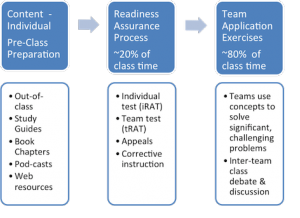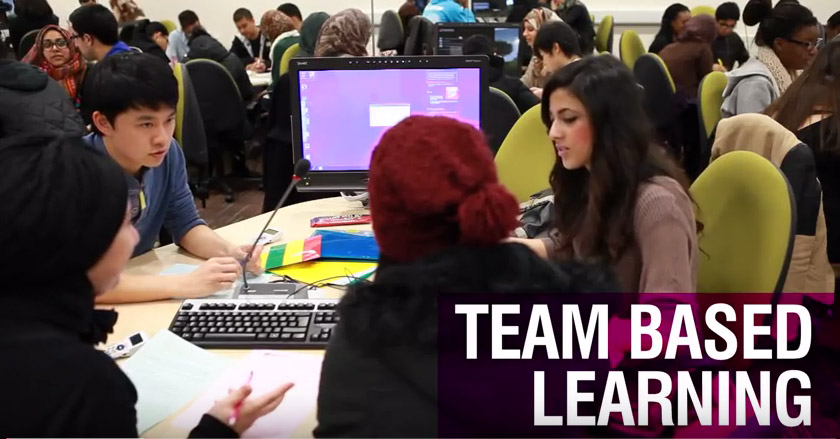The annual British Educational Training and Technology Show (BETT) show took place from 25th – 28th January 2016. This post covers team-based learning, one of the many topics discussed at the Technology in Higher Education Summit with higher education practitioners. This is the first of two posts from me on the BETT show.
In a highly practical workshop on team-based learning, Simon Tweddell, National Teaching Fellow and Senior Lecturer in Pharmacy Practice at the University of Bradford, demonstrated what team-based learning was and how it’s used in the teaching of Pharmacy and other subjects across many subjects across the country.
 What is team-based learning?
What is team-based learning?
According to the University of Bradford’s Centre for Educational Development, team-based learning is “Team-based Learning (TBL) is a structured, student-centered learning and teaching strategy that takes a ‘flipped’ approach to learning. It is designed to promote active, engaging and sustainable learning through a process of preparation, testing and application of knowledge. By regularly participating in team-based learning, students develop transferable skills that will develop their capabilities for the workplace, enhancing their employability.” The diagram below summaries the activities students need to do before and during class time.

Each student gets a voting clicker for the year, they get a pre-class test and come to the class with their clickers and get into their pre-allocated teams of 5-7 students. During the class, they do an individual test and team test. Teams get immediate feedback on their performance via “scratch-off” cards. The teams can appeal and make a case for their answers which were marked as incorrect. They pull out their course materials and generate a written appeal, which must consist of a clear statement of argument and evidence cited from the course materials.
The students then solve a problem, applying their knowledge in class to a significant problem, one that is specific and that each team gets the same problem, that they simultaneously reveal the answer to the class. The revealing of answers can be done using note cards, writing on a board or using clickers or a web-based voting system.
The students also get mid-module and of module feedback from a team-mate which is processed through the module leader and returned to the student with names removed. The feedback consists of one thing the team mate appreciates about the person they are giving feedback to and one thing they request they do differently next time. These make up a small contribution to the overall student grade.
The video below demonstrates the team-based learning technique at the University of Bradford in one of their flexible learning spaces with feedback from their students.
This technique is used in other countires as well, the following video from the Center for Teaching and Learning at The University of Texas at Austin explains the process of team-based learning and how it works in large lecture theatres as well as small group teaching.
Team-Based Learning: Group Work that Works from TEXAS Learning Sciences on Vimeo.
Further information can be found in this PDF from the University of Alabama, Birmingham entitled ‘The least you need to know about team-ased learning’ which was given out by at the team-based learning workshop at BETT 2016.
I found this technique to be highly engaging and something that created a sense of competition. It also promoted group work and communications skills in subject areas where this can be difficult to do. It’s not always about technology but the activity that students do pre, during and post class that makes the difference.
You can see a previous version of Simon Tweddell’s presentation on Slideshare presented at Sheffield Hallam University (July 2015).
How can you incorporate this into your teaching?
Team-based learning isn’t just for Pharmacy or similar, Zoe Swan, senior lecturer in law at the University of Greenwich is using the technique. At City University, we have many flexible learning spaces where you can try out elements of this technique for example, AG24a, College Building, EG05, ELG12, Drysdale Building and other such rooms.
If you’d like more information or advice please get in touch via your School Educational Technologist(s).
Next week, I’ll have the second part from the BETT show on Blended and Flipped Learning.

